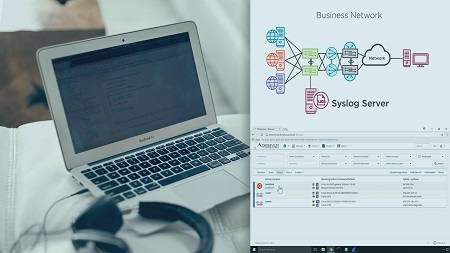
English | MP4 | AVC 1280×720 | AAC 44KHz 2ch | 2h 30m | 327 MB
Networking hardware often fails, and requires policies, protocols, and monitoring to keep a data network in optimal shape. This course will teach you the policies and tools engineers use to keep networks up and running.
Understanding the vocabulary, protocol operation, and hardware configuration is surprisingly only a small component of maintaining an enterprise data network. In this course, Network Management and Operations, you will learn how data moves through systems and how to reliably and securely keep the network moving data. First, you will learn about different types of network documentation. Next, you will learn about the mechanisms that keep systems working, even when a device fails. Finally, you will explore the tools used to monitor the state of network devices. By the end of this course, you will understand the secure mechanism engineers use to access network hardware, as well as, understand the difference between a hot, cold, and warm data center site.
Table of Contents
Course Overview
1 Course Overview
Network Documentation
2 Introduction and Module Goals
3 Network Drawings and Diagrams
4 IDF MDF
5 Network Symbols and Drawings
6 Written Documentation and Procedures
7 Baselining and Inventory Management
8 Summary
Disaster Recover and Business Continuity
9 Introduction and Module Goals
10 Network Service Availability
11 Hot Warm and Cold Sites
12 Backups
13 Differential Backups
14 Snapshots
15 Business Documents
16 Summary
Network Monitoring
17 Introduction and Module Goals
18 Monitoring the Network
19 Syslog Server and Baselines
20 Demo – Examine SNMP Server and Syslog Server
21 Other Network Monitoring
22 Patch Management and Packet Capture and Analysis
23 Demo – Examine Wireshark
24 Summary
Remote Network Management
25 Introduction and Module Goals
26 Network Management
27 Demo – SSH and Telnet
28 Remote Desktop
29 Demo – RDP
30 Out of Band Management
31 Virtual Private Networks
32 File Transfer Protocols
33 Summary
Policies and Best Practices
34 Introduction and Module Goals
35 User Policies
36 Remote Access Policy
37 Microsoft Password Requirements
38 Privileged User Agreement
39 Device and Software Policies
40 Sensitive Information Policies
41 Summary
Resolve the captcha to access the links!